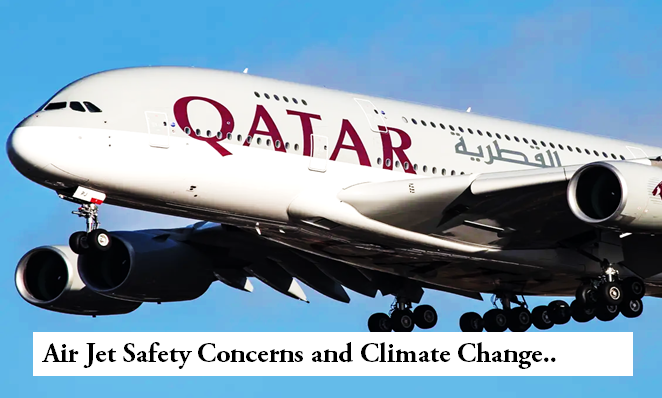Dublin: Recent accidents involving a Qatar Airlines flight from Doha and a Singapore Airlines flight in London have sparked renewed discussions about air jets. Last year, university researchers highlighted the impact of climate change on air jets, suggesting that this phenomenon could worsen. Various recommendations for change have been proposed to address these challenges.
Annual Incidents and Safety Data
The U.S. National Transportation Safety Board reported an average of 12 air crashes per year over a 13-year period. Between 2009 and 2022, 163 individuals were injured due to air turbulence on US-based airlines, averaging 12 injuries annually.
Researchers have identified that increased carbon emissions lead to warmer air at high altitudes, resulting in changes in wind speed. This has been linked to more frequent and severe turbulence.
Pilots receive specific aviation forecasts, including weather data, before flights. This information helps in route planning. Reports from other aircraft on similar routes also provide valuable insights, allowing pilots to avoid turbulent areas or adjust speeds to minimise impact. Crews are trained to manage such conditions effectively.
High-Traffic North Atlantic Routes
Scientists at the University of Reading in the UK noted a 55% increase in sky traffic on the busy North Atlantic route between 1979 and 2020. Turbulence is particularly common on flights between Europe and North America. However, experts clarify that turbulence itself does not cause plane crashes.
Managing Unexpected Turbulence
The US Federal Aviation Administration (FAA) advises passengers to always wear seat belts to mitigate the effects of unexpected turbulence. Items such as bags should be placed under seats, and caution is advised as luggage may fall from overhead racks. Passengers should crouch and use their hands to protect their heads, creating a barrier. The FAA also recommends taking deep breaths to prevent nausea.
Technically known as clear air turbulence, air jets occur due to sudden changes in the speed and direction of air flow at high altitudes, typically between 23,000 and 39,000 feet. This can create vortices that impact aircraft. While turbulence is common, passenger injuries remain rare.
Categories of Turbulence
Turbulence is classified into categories such as light, moderate, severe, and extreme, based on air stability. Light turbulence poses minimal difficulty for passengers wearing seat belts. Extreme turbulence, however, can cause the aircraft to feel like it is being pulled up or down, posing challenges for pilots to maintain control.
Managing Pressure Differences
Aircraft stay aloft due to the difference in air pressure above and below the wings. In cases of reduced air pressure, this difference decreases, causing the plane to descend. Pilots can quickly adjust speed and direction to avoid further emergencies. Rapid air flow across the flight path or rising air from the heated ground can also cause pressure differences, leading to turbulence.
By understanding and addressing these factors, both passengers and crew can better manage the risks associated with air jets and ensure safer flights.
Irish Samachar English News
{OR} Kindly click to follow the Irish Samachar News channel on WhatsApp


Comments are closed.